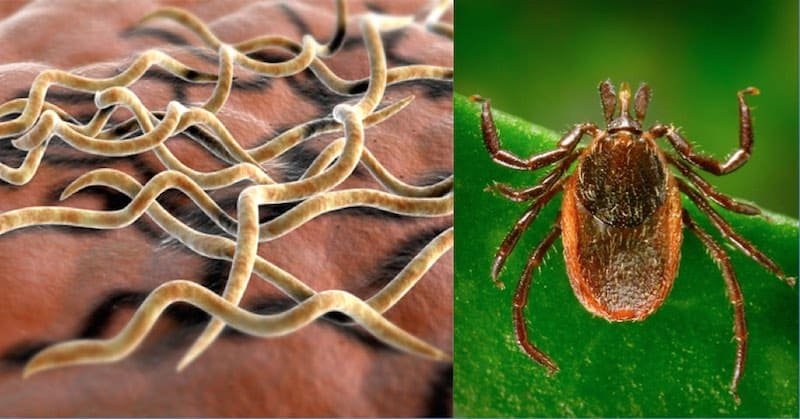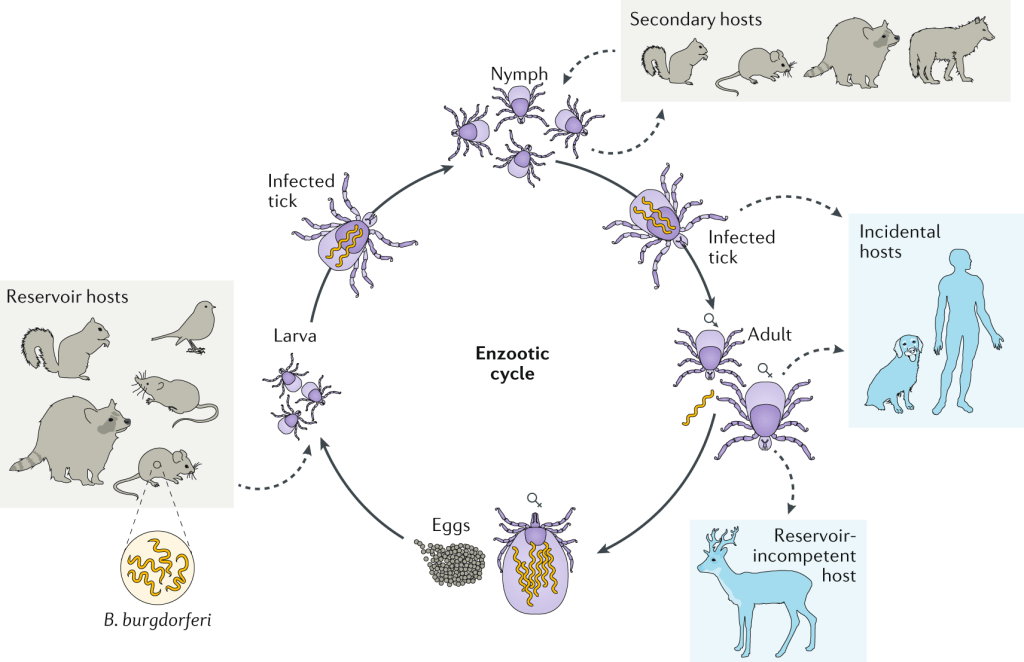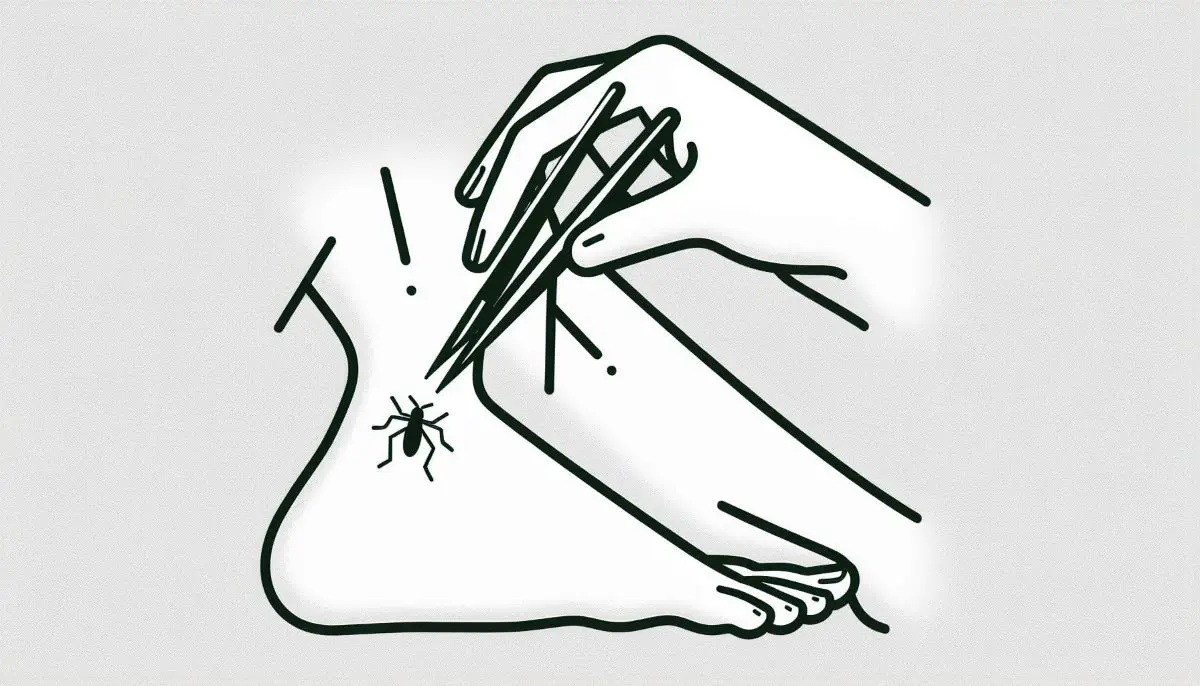Lyme Disease: Symptoms, Protection And Prevention
Combatting Lyme disease begins with knowledge; discover the critical symptoms, protective measures, and preventive strategies to safeguard your health.

Did you know that according to this 2013 press release by the CDC (the Centers for Disease Control and Prevention) that Lyme disease is much more common than previously thought, with over 300,000 new cases diagnosed each year in the United States?
Lyme disease is a potentially severe illness transmitted through tick bites, lurks in the great outdoors, posing risks to hikers, campers, and anyone enjoying nature.
Initially, it may present with symptoms like a distinctive “bull’s-eye” rash, fever, and overwhelming tiredness. If ignored, it can lead to much more serious complications, impacting the heart and nervous system.
Protecting yourself against Lyme disease is pretty straightforward. 99% of the case can be prevented simply by wearing the right clothes and applying insect repellents.
In this article, we’re gonna cover everything there is to know about Lyme disease. Use the jump-links below to “jump” to the section that interests you the most.
What is Lyme disease?
Lyme disease is an illness caused by bacteria that are transmitted to humans through bites from infected black-legged ticks. These small ticks, which are part of the arachnid family, live in grassy or wooded environments and are particularly active from spring to fall.

When one of these infected ticks bites a human or an animal, it transfers the bacteria responsible for Lyme disease into the host’s bloodstream. As the bacteria enter the bloodstream, they can spread rapidly throughout the body. Ticks are attracted to the warm, moist parts of the body and will latch onto their host to consume blood, increasing in size as they feed.

Often, a tick bite might not be noticed, but for some individuals, it can trigger severe reactions that can sometimes be deadly.
Within North America, Lyme disease is especially common in the United States and the southeastern parts of Canada. For those who enjoy outdoor activities, it’s essential to know the risks tied to tick bites and to take steps to shield themselves and their pets from this potentially severe disease.
Lyme Disease Symptoms
Lyme disease symptoms usually show up within weeks after a tick bite, but in some cases, they can take months or even years to appear. Early signs can be easy to miss or confuse with other illnesses, especially if you don’t realize you’ve been bitten by a tick.

Unfortunately, these common symptoms can be mistaken for other conditions if not linked to a tick bite.
Early Symptoms:
- A “bull’s-eye” rash (red ring-shaped rash) at the bite site
- Flu-like symptoms:
- Fever
- Headache
- Tiredness (fatigue)
- Muscle and joint aches
- Swollen lymph nodes
- Chills and night sweats
Later Symptoms (if untreated):
- Severe fatigue
- Vision problems (blurry vision, pain in the eyes)
- Muscle spasms or weakness
- Swelling and pain in joints (especially knees)
- Numbness, tingling, or sharp pains in arms, legs, hands, or feet
- Nerve problems (facial palsy, partial paralysis)
- Heart problems (irregular heartbeat, chest pain, shortness of breath)
- Cognitive issues (memory loss, confusion, trouble concentrating)
- Severe headaches with neck stiffness
- Hearing issues (ringing in ears or hearing loss)
- Seizures
If left untreated, Lyme disease can lead to serious complications that affect your heart, brain, and nervous system. The ongoing pain in muscles, bones, and joints can also have a major impact on your daily life.

How To Prevent Lyme Disease
When you’re enjoying outdoor activities in wooded or grassy areas, it’s important to take steps to prevent Lyme disease, an illness spread by ticks that can have serious complications.

The best way to prevent Lyme disease is to avoid getting bitten by ticks. Here are some tips to help you stay safe:
- Wear long sleeves and pants when you’re in areas with lots of trees or tall grass. Light-colored clothes can help you spot ticks more easily.
- Use bug spray that contains DEET on your skin and clothes.
- Check your body carefully for ticks after you’ve been outside, especially in areas like your scalp, armpits, and groin.
- Try to stay on clear trails and avoid touching plants when you can. Ticks like to hang out in tall grass and areas with lots of plants.
- Before you go outside, tuck your pants into your socks and wear closed-toe shoes for extra protection.
- When you get back inside, take a shower or bath right away to wash off any ticks that might be crawling on you.
Look at your body closely and use fine-tipped tweezers to remove any ticks that are attached. Grab the tick as close to your skin as you can and pull it out gently and steadily.
What To Do If You Find a Tick Attached To Your Skin?

If you find a tick on your skin, it’s important to remove it quickly (at least within the first 12 hours of finding it to reduce the risk of Lyme disease.
- Use tweezers to grab the tick as close to your skin as possible.
- Pull it straight out, being careful not to twist or jerk it, which could leave parts of the tick behind.
- After removing the tick, clean the area with disinfectant or apple cider vinegar.
- Put the tick in a plastic bag and write down the date you found it. The tick that bit you can be a helpful specimen if you develop symptoms later and need to have the tick tested.
Don’t try to remove the tick using home remedies like coconut oil or Vaseline. These methods can irritate the tick and make the situation worse.
If you can’t remove the tick yourself, get medical help right away. Keep in mind that ticks can carry other bacteria in addition to the ones that cause Lyme disease, like Bartonella, Rocky Mountain spotted fever, and Babesia. [x]
Can Lyme disease be cured?
Lyme disease can often be successfully treated and cured with antibiotics if caught early. The key to effective treatment is early diagnosis and starting the right antibiotic therapy.
For young children, pregnant women, or breastfeeding mothers, amoxicillin is often the preferred antibiotic due to its safety. If doxycycline or amoxicillin are not suitable, cefuroxime axetil can be used instead.
Depending on how advanced the disease is, doctors may prescribe antibiotics like doxycycline, amoxicillin, or cefuroxime for 10 to 21 days. [1]
In more serious cases that involve nerve symptoms or ongoing arthritis, stronger antibiotics given through an IV, like ceftriaxone. These stronger medications are administered for 14 to 28 days when oral antibiotics are not enough to fight the infection. [1]
| Antibiotic | Who It’s For | Duration | When It’s Used |
|---|---|---|---|
| Doxycycline | Adults and children over 8 years old | 10 to 21 days | Early-stage Lyme disease |
| Amoxicillin | Younger children, pregnant or breastfeeding women | 14 to 21 days | Alternative to doxycycline |
| Cefuroxime axetil | People who can’t take doxycycline or amoxicillin | 14 to 21 days | Alternative to other antibiotics |
| Intravenous antibiotics | Severe cases (neurological issues, late Lyme arthritis) | 14 to 28 days | For more severe or complicated Lyme disease cases |
The outlook is usually good for people who get prompt treatment. However, a small number of patients may have lingering symptoms even after treatment, which is known as Post-Treatment Lyme Disease Syndrome (PTLDS). These individuals may continue to experience fatigue, pain, and difficulty thinking clearly. [2]
There are currently no FDA-approved treatments specifically for PTLDS, and long-term antibiotic therapy has not been shown to help with these ongoing symptoms.
Are there any natural remedies to cure Lyme disease?
Several natural remedies may help manage Lyme disease, although their effectiveness varies, and more research is needed.
Herbal Remedies:
- Cryptolepis sanguinolenta: This herb has demonstrated strong antibacterial activity against Borrelia burgdorferi in laboratory studies and is considered effective for treating Lyme disease.
- Japanese Knotweed (Polygonum cuspidatum): Known for its antioxidant properties, it contains resveratrol and has been shown to have antimicrobial effects against Lyme bacteria.
- Cat’s Claw (Uncaria tomentosa): Traditionally used for various inflammatory conditions, it may enhance immune function and help reduce inflammation associated with Lyme disease.
- Sweet Wormwood (Artemisia annua): This herb has been recognized for its potential antibacterial properties.
- Black Walnut (Juglans nigra): Known for its antimicrobial effects, it has been studied for its potential against Lyme disease.
- Chinese Skullcap (Scutellaria baicalensis): This herb is believed to have anti-inflammatory and antimicrobial properties.
- Cistus incanus: This Mediterranean plant has shown promise in laboratory studies against the Lyme bacteria.
Essential oils, such as:
- Garlic
- Cinnamon bark oil
- Thyme, and
- Myrrh oil,
…have also been studied for their potential against the Lyme disease bacteria. While these oils have shown promise in lab settings, further research is necessary to confirm their effectiveness in humans.
Related: How To Tell If Essential Oils Are Pure and How to Make Essential Oils At Home
Adjusting your diet and lifestyle can also help manage inflammation. Eating a diet rich in fruits, vegetables, healthy fats, and omega-3 fatty acids is beneficial.
Supplements like magnesium, vitamin B-complex, and probiotics might provide relief. Staying hydrated and incorporating detoxifying foods can support overall health during treatment.
Can Lyme disease be sexually transmitted?
Can Lyme disease be passed from one person to another through sexual contact? This question has sparked a lot of discussion and investigation in the medical field.
Some research has discovered the bacteria responsible for Lyme disease, Borrelia burgdorferi, in the genital fluids of people who have the illness. This finding has raised questions about whether the disease might be transmitted sexually.
However, the evidence is not clear-cut, and many experts do not believe there is enough proof to say for sure that Lyme disease can be spread this way.
Studies involving animals suggest that simply touching an infected individual does not lead to Lyme disease, even though the bacteria might be present in bodily fluids.
Also, the way Lyme disease cases are spread across different areas does not match the patterns usually seen with sexually transmitted diseases. Most Lyme disease cases happen in places where ticks are common, rather than being spread out evenly like sexually transmitted infections typically are.
While more studies are needed to know for sure, the evidence we have now does not clearly show that Lyme disease can be passed on through sexual contact.
It is important for people to protect themselves in ways that are known to work, like staying away from areas with lots of ticks, using tick repellents, and carefully checking their bodies after spending time outside.
Where do I get tested for Lyme disease?
If you think you might have Lyme disease, it’s crucial to get tested at a trustworthy diagnostic center. The CDC suggests a two-step process for testing, beginning with the ELISA test. This test, while sensitive, might miss up to 50% of cases early on.
If the ELISA test is positive or not clear, a Western blot test is done to confirm the result. However, this test can also miss around 67% of Lyme disease cases.
These tests might not work well in the early stages of the infection, often only detecting 35-50% of cases accurately.
They can also show false positives because they react to other infections. It’s important to wait at least 2-4 weeks after exposure to get tested because antibodies take time to develop.
The reliability of these tests can also depend on the lab doing them, with labs following CDC guidelines giving more consistent results.
To ensure the most accurate diagnosis, you should talk to a healthcare provider who knows about Lyme disease and can help guide you through the testing process.
Alternative Treatments for Lyme Disease
Exploring different ways to treat Lyme disease, both patients and doctors are looking into options other than the usual antibiotic treatment.
Hyperbaric Oxygen Therapy (HBOT) is becoming one of these alternatives, offering hope for those who want to get better from ongoing Lyme disease.

HBOT helps by sending more oxygen to the body’s tissues, which can help them heal and recover from the damage caused by the infection.
Additionally, HBOT can help reduce inflammation, a common issue in Lyme disease, which can ease symptoms like joint pain and swelling.
Importantly, HBOT might also boost the immune system, which is key in fighting off the infection and helping the body heal.
While more research is needed to fully understand how well HBOT works for Lyme disease, early reports and studies show it might offer relief for those dealing with long-term symptoms.
As with any treatment, talking to a doctor is crucial to figure out if HBOT is the right choice for each person’s situation.
Click the link to learn more about Hyperbaric Oxygen Therapy and Lyme Disease.
Can Lyme Disease Kill You?
Lyme disease is usually not deadly. If it’s not treated, it can cause serious problems with your nerves, heart, and joints. But most people who get Lyme disease and get treated recover fully. Deaths from Lyme disease are very rare. Even when it affects the heart or brain, it’s usually treatable with antibiotics.
Some people might still feel tired or have pain after treatment, but this doesn’t increase the risk of death. So while Lyme disease can make you very sick if not treated, it almost never causes death.
